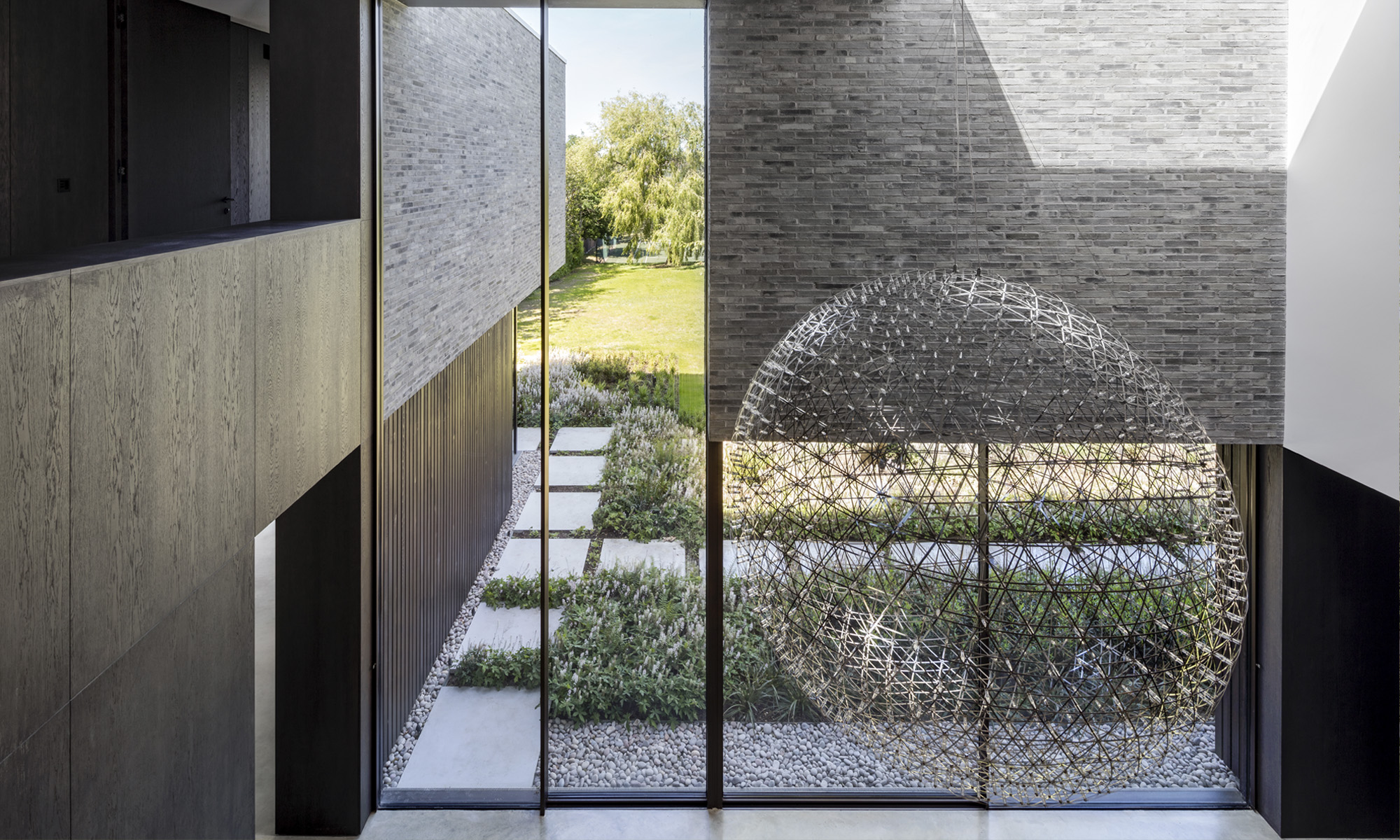The founder of the eponymous architecture studio on the interplay between indoors and outdoors and why fostering connections – and a sense of space – underscores each project.
Space. It’s something that can be in short supply in London. After decades of working between capacious countryside new-builds and city renovations, creating a feeling of openness has become a guiding principle for Gregory Phillips, whatever the location of the project in question.
Light-filled spaces are his practice’s calling card. Fluid relationships between inside and out are conveyed through concertina doors that compress seamlessly and vast picture windows that frame verdant, landscaped views.

“The modern architects of the early 20th century are always in the back of my head.”
- Gregory Phillips
Among these tropes, acres of glass and precision lines recall traditional modernism – whose architectural greats are never far from Gregory’s mind.
“The modern architects of the early 20th century are always in the back of my head,” he muses. “Mies van der Rohe was all about opening up the space to the exterior and the way that space is defined. Le Corbusier again considered the way space can work in a more contemporary way. At the forefront is how to put materials together to make enjoyable situations – how to make things really work.”
One of the first London-based architecture practices to offer a holistic residential service, Gregory Phillips Architects has long made interior design and landscaping an integral part of its offer.


Connections are crucial, whether that’s with the client or the dwelling’s links to the landscape or location. “If you’re working on a site in the city, it’s going to be very different to one in a clearing in the woods,” notes Gregory. “The landscaping elements of any project are a collaboration. We’ll have ideas that form part of the final answer and will work with landscape architects to achieve this.”
Whatever the project though, the practice’s philosophy is the same: helping clients form a vision of how they’d like to live and then translating that into their homes.
“It starts from those conversations really. Essentially, we’re trying to solve this three-dimensional puzzle,” Gregory reflects. “All the client’s requirements, all the best bits of the site, all its restrictions, all the historic and cultural connections – and put that together into something that makes sense and is a comfortable and architecturally striking solution.”


Having spaces that function well, finished with the best materials is, for Gregory, the definition of that nebulous term “luxury”. He believes that contemporary architecture enables the cutting-edge and the comfortable to co-exist.
“It gives you more freedom to do things that fit; it enables you to provide what’s needed really,” he reflects. “Today people want to live in all of their house, not have rooms they just use for special occasions.”
Trends come and go, but for Gregory these are just part of the landscape and filter their way naturally into the process. “What I do now is a version of what I’ve always been doing, it’s just we’ve become better at it. Other aspects of life are part of that, like sustainability and energy efficiency,” he says. “The opportunity we have with double and triple-glazed glass, for example, means you can have very large windows that enable you to enjoy the outside, something that didn’t always work so successfully as a technical solution in the past.”

“Contemporary architecture gives you more freedom to do things that fit; it enables you to provide what’s needed.”
- Gregory Phillips
Having studied at Glasgow’s Mackintosh School of Architecture and worked with Julyan Wickham and David Chipperfield, Gregory established his practice in 1991. He masterminds his design direction from the historic Savile Row – “Mayfair is such a spectacular part of the world; it’s just so uplifting to be here” – where he has been based for many years.
Setting out on his own, however, Gregory was initially taken in several different directions, from retail spaces to art galleries. It wasn’t until a residential project near Hyde Park that something clicked. “That was one light bulb moment. I remember thinking, this is exactly what I want to be doing. I loved the connection with the client and leading a team that came together to produce a home for someone to live in.”


Today, new-builds and renovations are part of the team’s remit, both of which are approached with the same enthusiasm. It’s a constant reinvention, he notes. “We get to do something more unique with every one based on what we’ve learnt from the last.”
“One of my team verbalised it well when we were looking at an extension project the other week,” Gregory adds. “He told the client that we’ve been looking at a solution that gives the best version of their house possible. I think that’s it: we’re always looking for the best solution. There come moments in every project where we’ll realise that a series of very small changes will make a big difference, and even though there’s a workload that goes with that, you have to dig deep and do it because you know it’ll bring the best outcome.”











